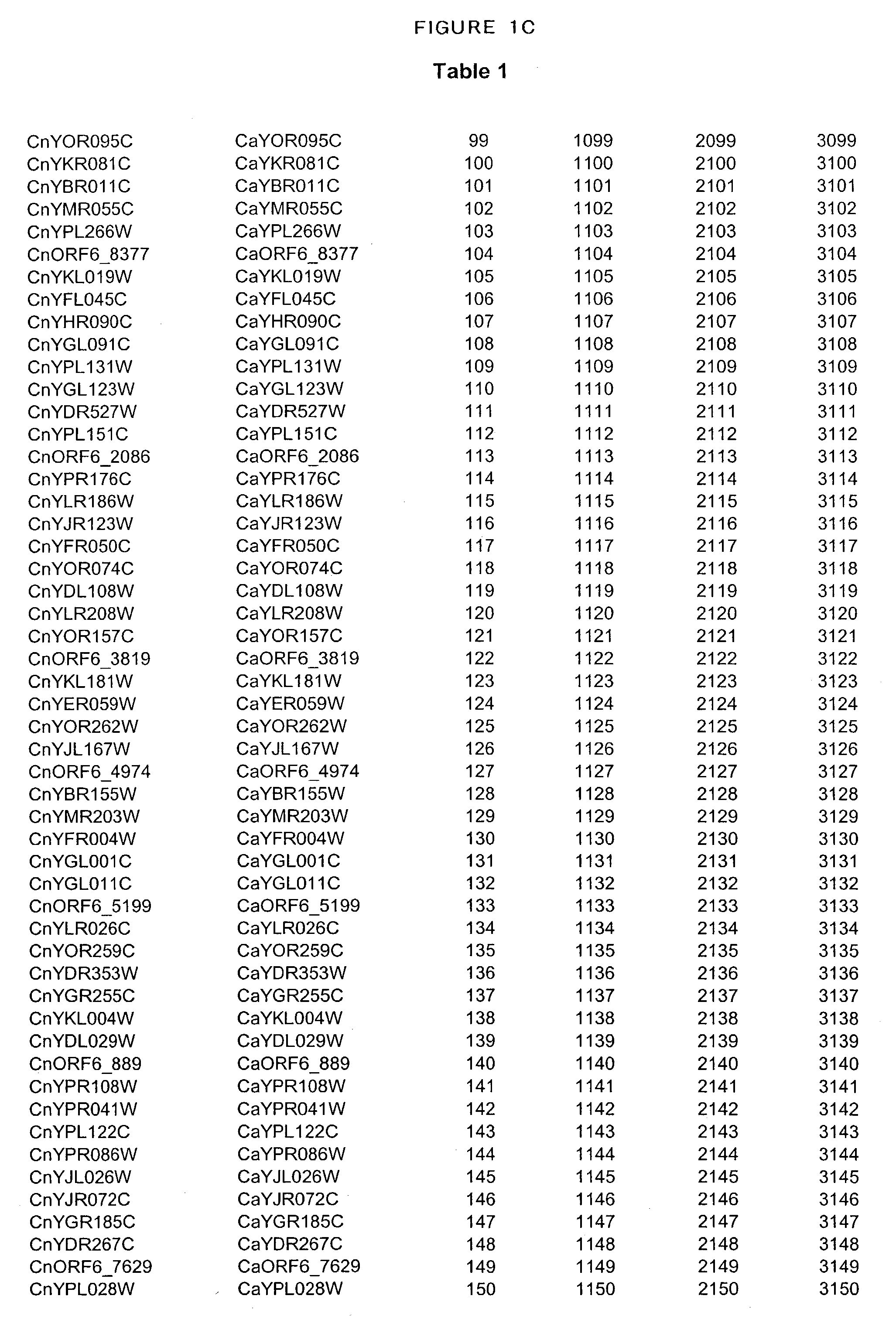Identification of essential genes of cryptococcus neoformans and methods of use
a technology of cryptococcus neoformans and nucleotide sequences, applied in the field of identification of nucleotide sequences of essential genes of cryptococcus neoformans, can solve the problems of complex treatment, poor understanding of cryptococcus pathogenesis, and severe side effects of treatment, and achieve the effect of facilitating rational drug design
- Summary
- Abstract
- Description
- Claims
- Application Information
AI Technical Summary
Benefits of technology
Problems solved by technology
Method used
Image
Examples
first embodiment
[0213] In a first embodiment, electrophoresis is used to identify test compounds capable of binding a polypeptide of the invention. In general, a polypeptide molecule of the invention bound to a test compound is larger than an unbound polypeptide molecule of the invention. Electrophoretic separation based on size allows for determination of such a change in size. Any method of electrophoretic separation, including but not limited to, denaturing and non-denaturing polyacrylamide gel electrophoresis, urea gel electrophoresis, gel filtration, pulsed field gel electrophoresis, two dimensional gel electrophoresis, continuous flow electrophoresis, zone electrophoresis, agarose gel electrophoresis, and capillary electrophoresis can be used. In a preferred embodiment, an automated electrophoretic system comprising a capillary cartridge having a plurality of capillary tubes is used for high-throughput screening of test compounds capable of binding a target gene product of the invention. Such...
second embodiment
[0214] In a second embodiment, size exclusion chromatography is used to identify test compounds capable of binding polypeptide molecules of the invention. Size-exclusion chromatography separates molecules based on their size and uses gel-based media comprised of beads with specific size distributions. When applied to a column, this media settles into a tightly packed matrix and forms a complex array of pores. Separation is accomplished by the inclusion or exclusion of molecules by these pores based on molecular size. Small molecules are included into the pores and, consequently, their migration through the matrix is retarded due to the added distance they must travel before elution. Large molecules are excluded from the pores and migrate with the void volume when applied to the matrix. In the present invention, a target gene product of the invention bound to a test compound will be larger, and thus elute faster from the size exclusion column, than an unbound polypeptide molecule.
third embodiment
[0215] In a third embodiment, mass spectrometry is used to identify test compounds capable of binding polypeptides of the invention. An automated method for analyzing mass spectrometer data which can analyze complex mixtures containing many thousands of components and can correct for background noise, multiply charged peaks and atomic isotope peaks is described in U.S. Pat. No. 6,147,344.
[0216] In another embodiment, affinity chromatography is used to identify test compounds capable of binding target gene products of the invention. To accomplish this, a target gene product of the invention is labeled with an affinity tag (e.g., GST, HA, myc, streptavidin, biotin) such that the polypeptide molecule of the invention can attach to a solid support through interaction with the affinity tag and solid support medium. The tagged polypeptide of the invention is contacted with a test compound either while free in solution or while bound to a solid support. The solid support an comprise, but i...
PUM
| Property | Measurement | Unit |
|---|---|---|
| molecular weight | aaaaa | aaaaa |
| molecular distances | aaaaa | aaaaa |
| body temperature | aaaaa | aaaaa |
Abstract
Description
Claims
Application Information
 Login to View More
Login to View More - R&D
- Intellectual Property
- Life Sciences
- Materials
- Tech Scout
- Unparalleled Data Quality
- Higher Quality Content
- 60% Fewer Hallucinations
Browse by: Latest US Patents, China's latest patents, Technical Efficacy Thesaurus, Application Domain, Technology Topic, Popular Technical Reports.
© 2025 PatSnap. All rights reserved.Legal|Privacy policy|Modern Slavery Act Transparency Statement|Sitemap|About US| Contact US: help@patsnap.com



